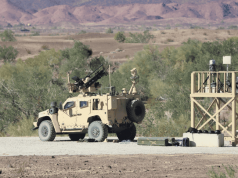
US marines from Marine Operational Test & Evaluation Squadron One (VMX-1) have completed an operational test and evaluation of the joint air-to-ground missile (JAGM) that is being introduced on the AH-1Z Viper attack helicopter.
The testing took place between November 3 and 7 at Eglin Air Force Base in Florida.
VMX-1 fired and evaluated the JAGM to determine its suitability and effectiveness to support expeditionary advanced base operations, such as conducting sea denial operations within the littorals and supporting sea control operations.
This test is part of a larger effort to upgrade the AH-1Z and UH-1Y aircraft, in alignment with the Commandant’s vision of force modernization vision to maintain a competitive edge against potential adversaries, the service said in announcement.
Personnel from Air Test and Evaluation Squadron Two One (HX-21), Naval Air Systems Command Direct and Time Sensitive Strike program office (PMA-242), Army Program Executive Office Missiles and Space, Air Force 780th Test Squadron, as well as industry partners were on location to observe and analyze the data from the test event.
The introduction of JAGM onto the Viper could lead to significant improvements in lethality of attack helicopters by arming them with newer munitions equipped with two sensor technologies and optimized missile performance against maritime targets.
“Watching these professionals from across the services and industry come together to test the effectiveness and work on improvement for this weapon system is truly a phenomenal experience,” said VMX-1 Commanding Officer Col. Byron Sullivan. “The team is doing everything possible to ensure this capability will be the needed upgrade that enhances our ability to use precision strikes against fast-moving maritime targets.”
The team observed the test from locations across Eglin Air Force Base, honing in on weather considerations, telemetry and instrumentation, coordinating with the pilots, and observing the impact zone. Ultimately, the data collected will be analyzed to determine overall system effectiveness and develop the tactics, techniques, and procedures for its employment.
“Executing this type of concept development is very critical to get it right on paper and put more effective systems in the hands of the warfighter,” said Maj. Thomas Hutson, the Assault Support department head at VMX-1 and member of the JAGM test team.
The US marines are testing JAGM on the AH-1Z after fixing software errors on the aircraft that were discovered during developmental and integration testing.
Once fielded, the JAGM will allow Viper pilots to engage targets that could not be engaged with the Hellfire missile. JAGM benefits from two new seekers that replicate and combine the capabilities of the existing laser-guided Hellfire Romeo and radar-guided Longbow Hellfire missiles.


























